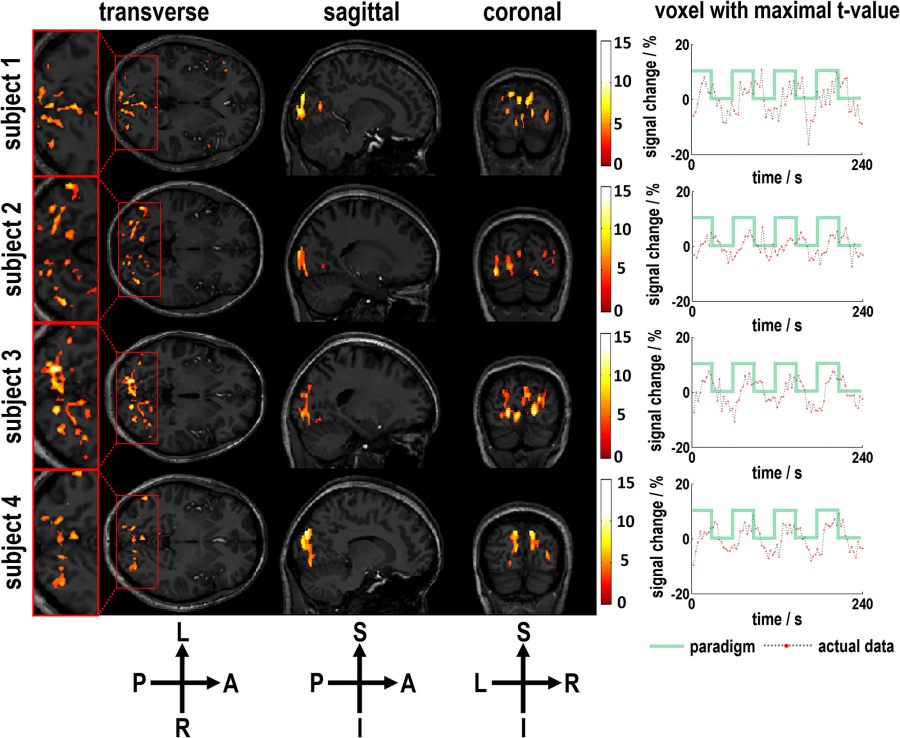Scientists Develop New Technique for High Spatial Resolution BOLD fMRI
Date:30-03-2020 | 【Print】 【close】
Blood oxygenation level dependent (BOLD) imaging is the standard technique used to generate images in functional MRI (fMRI) studies, and relies on regional differences in cerebral blood flow to delineate regional activity.
Echo-planar imaging (EPI) is commonly used for fMRI because of its excellent sensitivity to BOLD signal changes and rapid acquisition speed.
However, the use of EPI faces the challenge of geometric distortion especially in high spatial resolution fMRI.
Researchers from the Shenzhen Institutes of Advanced Technology (SIAT) of the Chinese Academy of Sciences, developed an accelerated gradient echo (GRE) sequence for high spatial resolution BOLD fMRI, combined simultaneous inter-multiple-slice excitation (SMS) with multi-echo-shifting.
Through numerical simulation, an optimized low flip angle of 9° (an optimized flip angle which was used in all fMRI experiments) was utilized, resulted in a low power deposition even if the sequence conducted on 7 T (tesla) with 5 slices being simultaneously excited.
The experiment results showed that geometric distortion-free BOLD images with voxel size of 1.0×1.0×2.5mm3 were obtained.
Both visual and motor event-related fMRI experiments demonstrated that the proposed sequence was able to effectively capture BOLD signal changes and has potential for high spatial resolution fMRI at ultra-high field.
This study has been published on the Magnetic Resonance Imaging.

Figure. The visual task experiment results of four subjects using SMSiES sequence
Media Contact:
ZHANG Xiaomin
Email: xm.zhang@siat.ac.cn